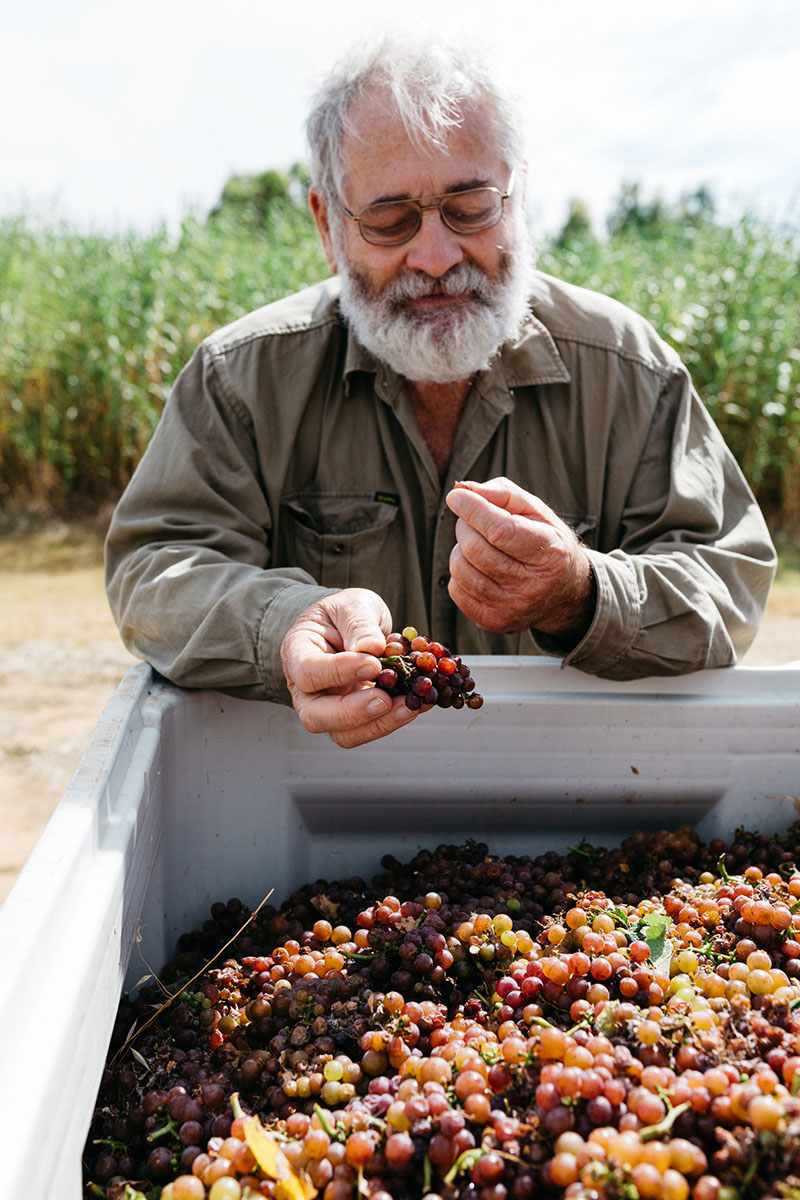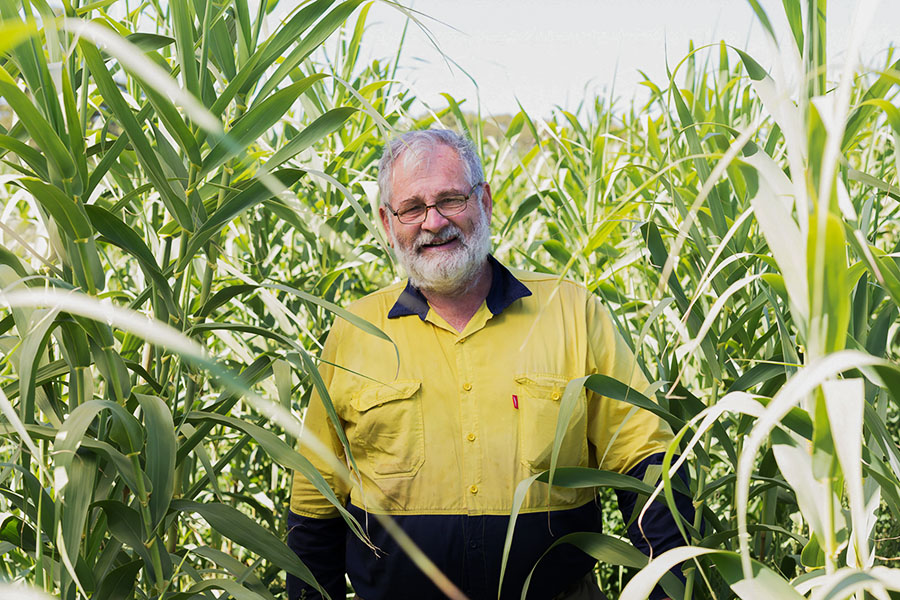 Each harvest brings Temple Bruer one step closer to reaching net zero carbon emissions.
Each harvest brings Temple Bruer one step closer to reaching net zero carbon emissions.
When David and Barbara Bruer planted their first vines at South Australia's Langhorne Creek in 1973, they made a commitment to grow quality produce based on sound production processes that would contribute to the Earth, not deplete it. A trained chemist, David also joined the Organic Vignerons Association of Australia in the mid-eighties and helped them redefine their standards from a scientific point of view.
Since those early days, Temple Bruer's vineyards have continued to expand at Langhorne Creek and further afield to Eden Valley and Loxton. Even though Barbara passed away some years ago, David carries on with her vision to make Temple Bruer carbon neutral and to ensure each vineyard and every bottle of wine achieves an A-grade organic certification with NASAA (National Association for Sustainable Agriculture Australia).
Healthy soil free of artificial chemical inputs is a major key to organic
When it comes to containment and management of this notoriously invasive grass, David's solution is breathtakingly simple. 'Arundo rhizomes cannot spread across compacted ground, so we simply surrounded our growing area with roadways,' explains the winemaker. 'As long as the crop is planted away from waterways and flood zones and is fenced in by compaction, Arundo is easy to manage.'
When it comes to containment and management of this notoriously invasive grass, David's solution is breathtakingly simple.
Given the simple and effective containment measures, David is surprised that Arundo is still considered a pariah within agricultural circles and regulatory bodies (its cultivation is illegal in Queensland and New South Wales). 'It's an incredibly fast-growing crop, with a lifespan of well over 20 years,' says David. 'When the crop reaches between 3 to 5 metres, we run a modified sugarcane harvester over it, cutting the plant about 10 centimetres from the ground and into lengths of around 20 centimetres.'
Temple Bruer's Arundo field yields between 40 to 50 tonnes of dry matter each year and requires virtually zero maintenance. When the harvested piles are ready, they are fed into the winery's pyrolysis kiln, which David had fabricated locally. Occasionally the Arundo is joined by oak inner tank staves that have reached the end of their lifecycle. Then the biochar is charged with winery compost such as nutrient-rich yeast lees and vine cuttings as well as lucerne, which is specially grown on farm. Once the biochar is ready, it is simply spread beneath the vines as required.


